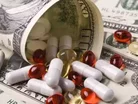The financial pull of counterfeit drugs

According to estimations from the World Health Organisation (WHO), 10 percent of all medications in the world are counterfeit. The manufacturing and supply of counterfeit drugs is a growing problem and the trend has now even stretched into the world of counterfeit medical devices. The rise in popularity of online shopping has seen the eruption of ‘fake online pharmacies’ and it is these internet sales that is fuelling the counterfeit drug movement and facilitating the inclusion of counterfeit medical products in the supply chain.
The issue of counterfeit drugs differs across the world and breaking down the WHOs estimation reveals that only one percent of counterfeit drugs are found in the developed world; the problem is much more severe in poor economic climates where medical regulations and enforcement systems are lacking. On that basis, incidences of counterfeit drugs in richer and more industrialised countries like the U.S, Australia, and the majority of the European Union are fairly rare. It is the poorer countries in Africa and Asia where the problem is particularly prevalent and suggestions indicate that in some developing countries up to a third of medication and drugs could be counterfeit.
The demand for counterfeit drugs can be largely attributed to finances. The WHO says: “Paying for medicines can consume a significant proportion of an individual or family income.” This explains why people are shopping around for cheaper prices. However, rather than through choice, consumers may be forced to go to non-regulated vendors and expose themselves to counterfeit drugs. Again, this is often the result of a limited economy and restricted healthcare resources: “It is often the case in the rural areas of developing countries that medicine supplies at regular health facilities do not meet demand,” explains the WHO.
As with any health scam, the drive behind these illegal operations is money-related. “Counterfeiting medicines can be very lucrative,” claims the WHO. “Since many countries have not yet enacted deterrent legislation, counterfeiters often do not fear prosecution.” To ensure they maximise the potential of such a financially rich market, one of the things that counterfeiters focus on is reflecting the most popular healthcare and lifestyle medications. “Counterfeiters target the most lucrative markets, copying high value, high turnover, high demand medicines,” says the Medicines and Healthcare products Regulatory Agency (MHRA). This includes drugs like Prozac, Viagra, Tamiflu and the weight loss supplement Alli. By replicating well-known, branded drugs, counterfeiters benefit from genuine brand power and by promising to deliver genuine products at a discounted price, they have the ability to spark a huge amount of interest from interested consumers.
Aside from the potential harmful effects that counterfeit drugs may have on the user’s health, they also contribute to a financial burden on economies across the world. Estimated figures suggest that the market of counterfeit drugs is worth US$32 billion on an annual level and there are estimates that in five years this figure could grow to $62 billion a year. Transactions of counterfeit drugs on this level support international crime activities and they also contribute to financial losses in the pharmaceutical industry. In addition, they are responsible for a burden on public health and law enforcement services, as well as being a significant cost to the health delivery system; if counterfeit drugs are filtered through to the patient and pharmacy level, trust is lost in the public health system.
A combined human and financial cost has seen efforts to eliminate the counterfeit drug industry intensify over recent years. In 2006 the WHO played a part in forming IMPACT, the International Medical Products Anti-Counterfeiting Taskforce. According to the WHO, the aim of IMPACT is to “protect people from buying and taking counterfeit medicines,” and also to “prevent the manufacture and distribution of counterfeit medicines.” Aside from being a key IMPACT player, the WHO also provides “direct country and regional support for strengthening medicines regulation.”
Counterfeit drugs are a growing global issue and as the internet trend shows no signs of fading it is hard to see how fake online pharmacies will cease trade. Although the issue is presently being seen in the developing world, there have been incidences where counterfeit drugs have reached a patient level in developed countries. Although preventative methods can tackle the criminal aspect of counterfeit drugs, consumers need to be educated in the dangers of these medications to halt the alarming growth in the counterfeit drug industry.
Examples of counterfeit medications:
|
What |
Where |
Why |
|
Anti-diabetic medicine Used to lower blood sugar |
China, 2009 |
Contained six times the normal dose of ‘glibenclamide’. Two people diedandnine people were hospitalised |
|
Metakelfin An antimalarial medication |
United Republic of Tanzania, 2009 |
Discovered in 40 pharmacies; it lacked sufficient active ingredient |
|
Viagra andCialis Used to treat erectile dysfunction |
Thailand, 2008 |
Smuggled into Thailand from an unknown source in an unknown country |
|
Xenical Anti-obesity pill |
United States of America, 2007 |
Contained no active ingredient and sold via Internet sites that were operated outside the USA |
|
Zyprexa Used to treat bipolar disorder and schizophrenia |
United Kingdom, 2007 |
Detected in the legal supply chain; it lacked sufficient active ingredients |
|
Lipitor Used to lower cholesterol |
United Kingdom, 2006 |
Detected in the legal supply chain; it lacked sufficient active ingredients |
Source: WHO
- TikTok's Role in Healthcare: Safeguarding to MisinformationTechnology & AI
- WHO Health Chatbot Built on 'Humanised' GenAIDigital Healthcare
- Emocha Health on medication non-adherence & drug cost hikesMedical Devices & Pharma
- Global effort can end pandemic in 2022 - WHOTeleHealth & COVID-19



